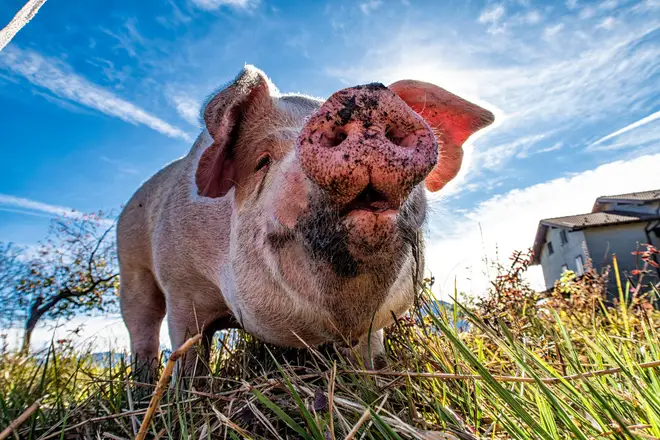
Jim Diamond 1am - 4am
27 November 2023, 13:07 | Updated: 27 November 2023, 14:05

A north Yorkshire resident has tested positive for swine flu after coming into contact with a sick pig, health officials have revealed.
The person, after testing positive for the sickness when they visited their GP, had been"experiencing respiratory symptoms', the UK Health Security (UKHSA) SAID.
The source of infection has yet to be identified and health chiefs are now trying to track down all contacts of the person.
Medics detected swine flu in the patient as part of routine national flu surveillance, which is conducted by UKHSA and the Royal College of General Practitioners.
This specific strain is called H1N2 and can be passed from ill pigs to humans.
It is rare for this strain to be passed from human to human.
Read more: NHS strike breakthrough: Consultants reach pay deal with government that could end strikes
H1N2 differs from H1N1, which caused the 2009 outbreak, killing 457 people in the UK.
H1N1 is now circulating in humans seasonally and is no longer referred to as swine flu and it is distinct from the viruses circulating in the pig population.
In humans, the symptoms of swine flu include a high temperature, cough, runny nose and body aches - similar to seasonal flu.
Most cases are mild and clear up in a few weeks, with very few ending up in death.
However, scientists warn that children under five, people over 65, pregnant people and those with underlying health conditions are more at risk of complications.

UKSHA is monitoring the situation and taking steps to increase surveillance within existing profanes.
Meera Chand, Incident Director at UKHSA said: "It is thanks to routine flu surveillance and genome sequencing that we have been able to detect this virus.
"This is the first time we have detected this virus in humans in the UK, though it is very similar to viruses that have been detected in pigs.
"We are working rapidly to trace close contacts and reduce any potential spread. In accordance with established protocols, investigations are underway to learn how the individual acquired the infection and to assess whether there are any further associated cases."

For infected pigs, the animals may experience fever, depression, coughing (barking), discharge from the nose or eyes, sneezing, breathing issues, red or inflamed eyes and going off feed.
Although, some may show no sign of illness at all.
Chief Veterinary Officer Christine Middlemiss said: "We know that some diseases of animals can be transferred to humans - which is why high standards of animal health, welfare and biosecurity are so important.
"Through our animal and human surveillance systems, we work together to protect everyone. In this case, we are providing specialist veterinary and scientific knowledge to support the UKHSA investigation.
"Pig keepers must also report any suspicion of swine flu in their herds to their local vet immediately."

The 2009 swine flu pandemic was caused by the H1N1 strain, declared by the World Health Organization (WHO) from June 2009 to August 2010.
The first known case was recorded in a rural Mexican town, La Gloria in Veracruz.
WHO reported 18,449 lab-confirmed deaths globally but the estimated excess death is thought to be 284,000.